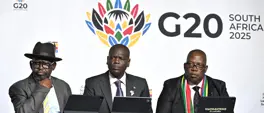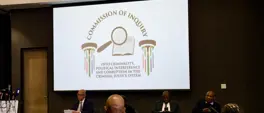Nuclear dreams vs reality: The return of South Africa's Pebble Bed Modular Reactor
Kabous Le Roux
18 November 2025 | 6:10The conversation around PBMR has reignited, with Minister Mantashe announcing the project will be taken out of ‘care and maintenance’. Energy analyst Chris Yellend suggests a strong dose of reality.

Image by Gerd Altmann from Pixabay
The PBMR project was first championed in the early 2000s by David Nichols, currently chairperson of the Nuclear Energy Corporation of South Africa (NECSA). "He was passionate about the idea of small modular reactors and became a kind of nuclear evangelist pushing this idea," explains Yellend.
Despite South Africa investing more than R10 billion in the project, it was eventually shelved in 2010 without ever producing even a prototype reactor.
The appeal of the PBMR technology was its potential to operate inland without requiring significant water cooling, making it theoretically suitable for water-constrained South Africa. However, the same technology had previously failed in both Germany and the United States.
"We are now 15 years behind the curve," Yellend emphasises.
"The world has moved on very significantly, to the extent where there is a PBMR in China operating as a pilot. We haven't even started. What we did 15 years ago was state of the art, but it no longer is.”
When asked about the minister's motivation for reviving the project, Yellend offereda thought-provoking perspective: "There are very noisy lobbyists and political pressure groups on government, and I have a feeling that the Minister feels compelled to, what is known in the industry as 'throwing out a few bones and walking the dog’. When the dogs get restless and they get agitated, you need to take them for a walk and throw them a few bones to calm them down."
The financial and technical challenges remain formidable. Nuclear power requires enormous capital investment, specialised skills that South Africa has largely lost over the past 15 years and faces a highly regulated global environment where ‘every single component, piece of pipe or valve... has to be individually licensed’.
"I am not anti-nuclear," clarifies Yellend. "I think it should be on the table as an option if it can compete. But I think the business case is weak because of several factors: price, very long lead times of 10 to 15 years, and high cost and time overruns."
Yellend's analysis suggests a need for measured expectations rather than renewed nuclear evangelism. As he aptly put it: "We must temper our dreams with some reality. Not to be pessimistic, but not to live in a world of dreams."
To hear the full discussion about South Africa's nuclear aspirations, the geopolitical complications of developing this type of nuclear technology, and the practical challenges of implementing the PBMR project, be sure to listen to the complete episode by clicking below:
Get the whole picture 💡
Take a look at the topic timeline for all related articles.













